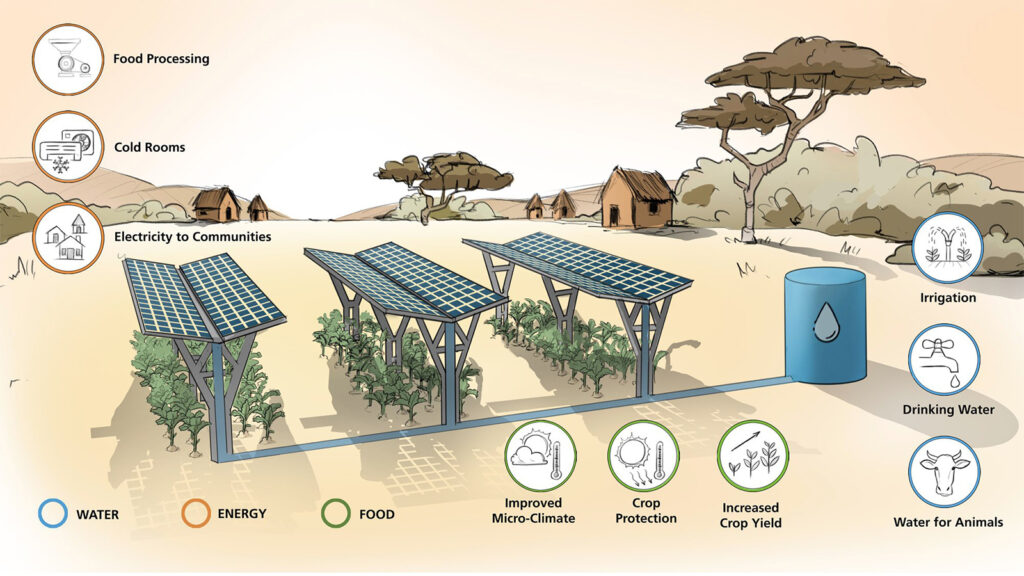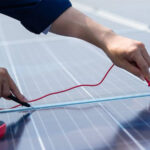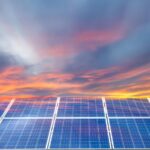Agrivoltaics, which combines energy generation and agricultural expertise, is a breakthrough concept in sustainable practises. This novel strategy, which harmoniously mixes solar photovoltaic (PV) technology with traditional agriculture, could boost smart farming practises and mitigate climate change. Agrivoltaics offers hope for a greener, more resilient future by reusing land for energy and agriculture.
We’ll investigate agrivoltaics’ many varieties, benefits, and inspiring implementations. Agrivoltaics, like every transformational endeavour, has challenges that must be considered. We learn how this unique technique can change our agricultural and energy landscapes by exploring the promise and the drawbacks.
Table of Contents
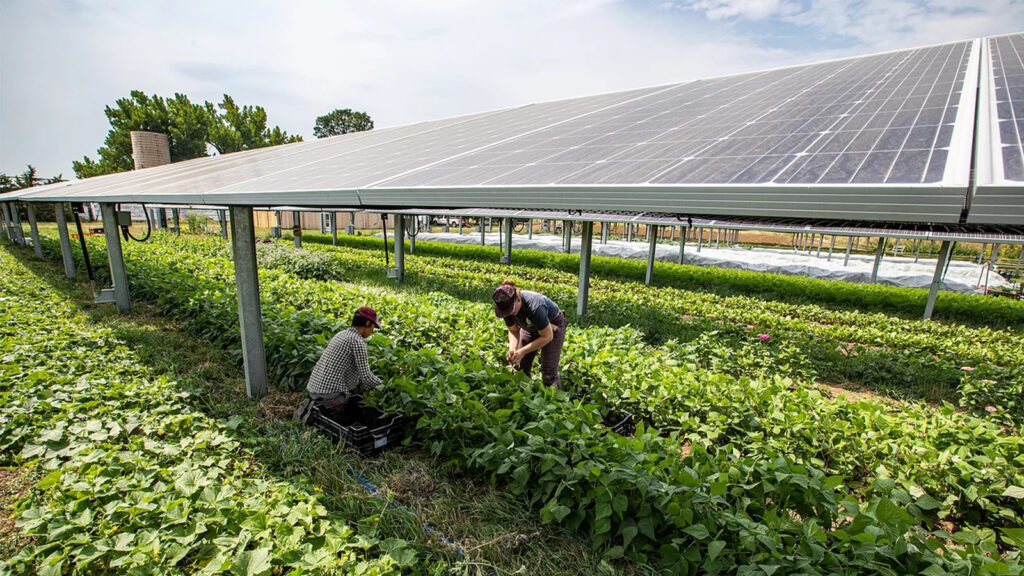
What is agrivoltaics?
The rapidly increasing and highly promising concept of Agrovoltaics refers to the joint development of the same land area for solar PV and agriculture, allowing the coexistence of two critical industries. Agrovoltaics of various varieties have already been created around the world, with a wide range of novel ways appearing in recent years that will be critical components of the energy and climate transition.
How many types of agrivoltaics?
There are three basic types of agrivoltaics, including fixed solar panels over crops, elevated solar panels, solar greenhouses. In addition to this, scientists have also developed other complex types such as integrated systems and dynamic agrivoltaics. All of these varieties have various factors that are utilised to maximise the amount of solar energy absorbed by both the panels and the crops. The tilt angle of the solar panels is the most important variable in agrivoltaic systems. Other factors considered while determining the placement of an agrivoltaic system are the crops picked, panel heights, solar irradiation, and local climate.
1. Fixed solar panels over crops
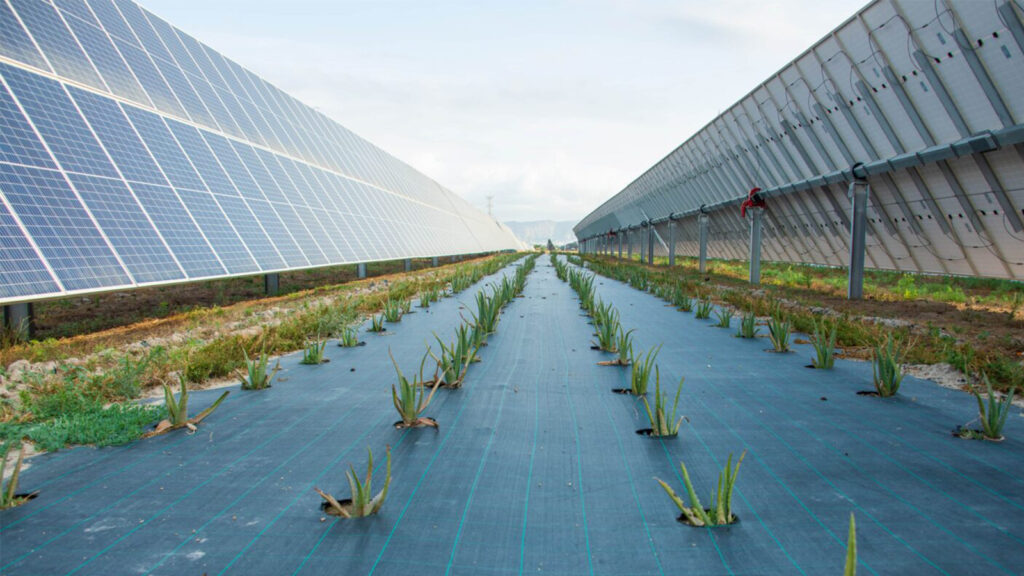
Most conventional agrovoltaic systems consist of permanently installed solar panels on or in between crop fields. Changing the solar panels’ density or angle of tilt can improve the efficiency of the setup.
Permanent solar panel installation is the most common method of deploying agrovoltaics for large-scale projects (>5 MW). This type of agrovoltaic improves animal welfare by providing easy access to shade, and it also allows for the cultivation of permanent flora and grassland between and below the solar panels, which can be used for grazing.
By adjusting the amount of light and shade that the crops below get, solar tracking structures create a more stable agricultural and energy system. In addition, it permits crop protection from harsh weather conditions, enhancing crop growth.
2.solar panels on a higher level
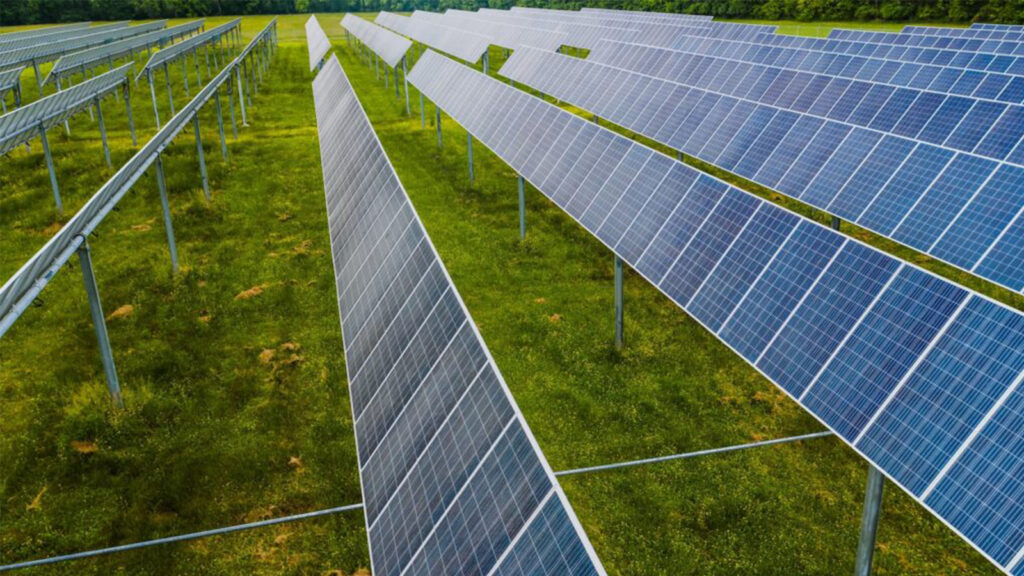
The solar panels in this agrovoltaic application are elevated to a greater height than is customary. This extends the height above ground (often between 2.5m and 5m, depending on the project’s goals and requirements). This paves the way for the improvement of crop yields in areas such as orchards and vineyards.
There may be enough room for light to reach the crops and plants between the solar panels, promoting healthy growth. In addition, these panels may be raised or lowered depending on the requirements of the project, making it possible for harvesting equipment, humans, and other items to pass through.
3. solar greenhouses
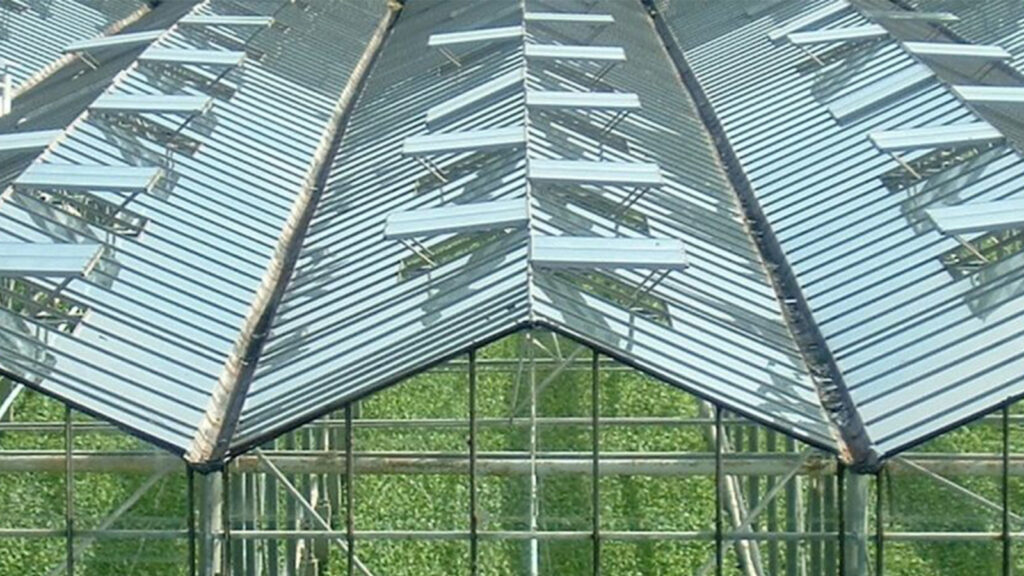
Greenhouses powered entirely by solar energy have been a popular trend in recent years. It entails installing photovoltaic panels on the greenhouse roof, which generates renewable energy that can be fed back into the grid, stored, or used for the greenhouse’s own consumption and needs (such as its lighting, irrigation system, etc.) in a way that doesn’t compromise production.
4. Integrated systems
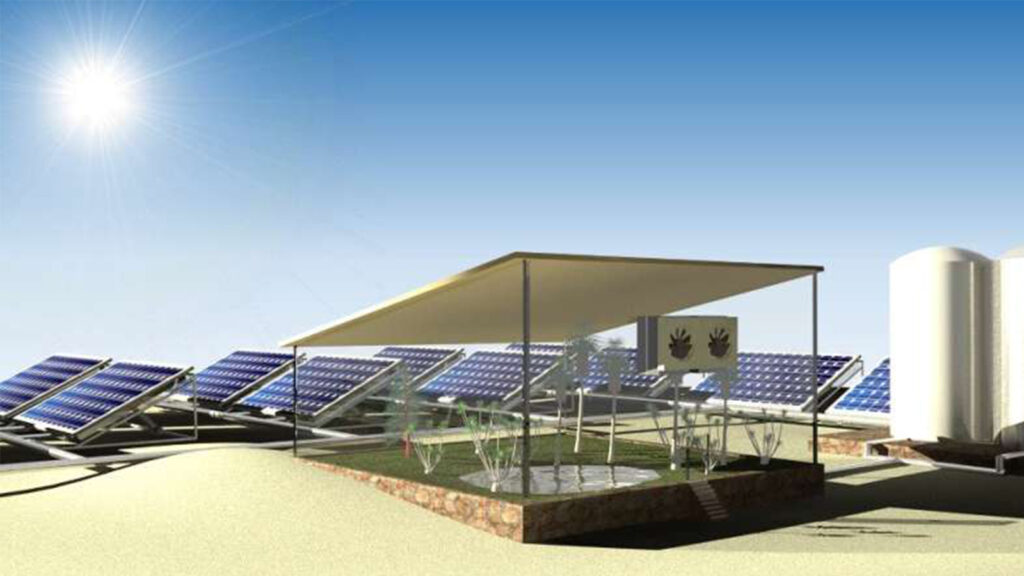
Saudi Arabian researchers have developed a solar-powered device employing a novel hydrogel to cultivate spinach with air-collected water. Researchers employed the byproduct heat from energy generation using solar panels to force water out of the hydrogel. The water vapour condenses in the metal container below. In contrast, by absorbing the heat and lowering the temperature of the panels, the hydrogel can boost the efficiency of solar photovoltaic systems by as much as 9%.
This cutting-edge design provides a long-term, inexpensive option for enhancing the safety of food and water supplies in arid regions.
5. Dynamic agrivoltaic
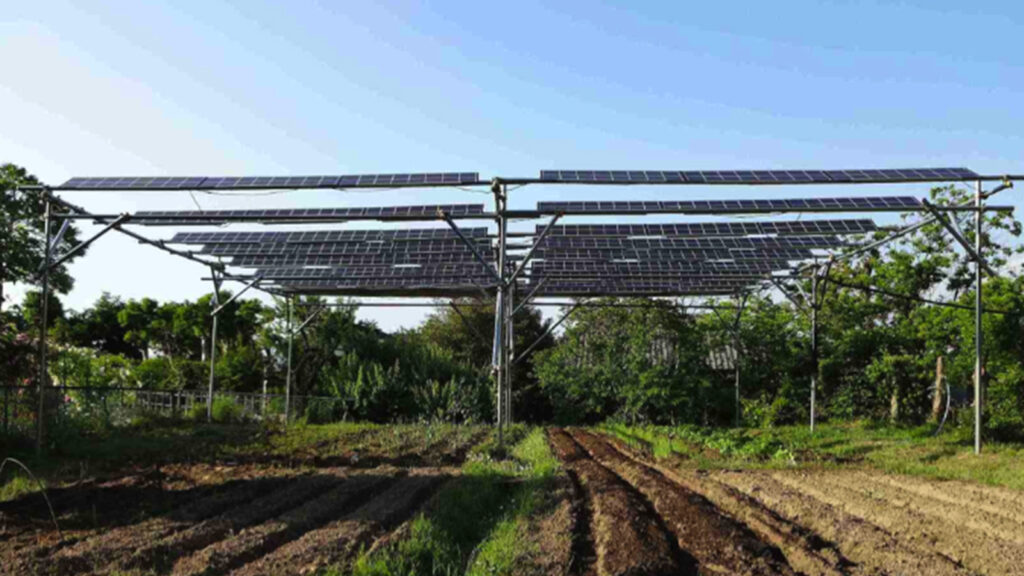
The first and most basic dynamic system was created in Japan with a flimsy set of panels put on thin pipes on stands with no concrete footings. The panels are easily detached and lightweight enough to be moved or altered by hand as the seasons change and the farmer works the land. In order to better withstand wind, a large amount of space has been left between each solar panel.
The position of the panels can be automatically optimised by some newer types of agrivoltaic systems, which make use of a tracking system. For example, The Swiss company Insolight is working on static translucent solar panels with an integrated tracking system. Focusing sunlight into solar cells, the module also has a dynamic light transmission mechanism that can be adjusted to meet the specific requirements of farming.
What are the benefit of agrivoltaics?
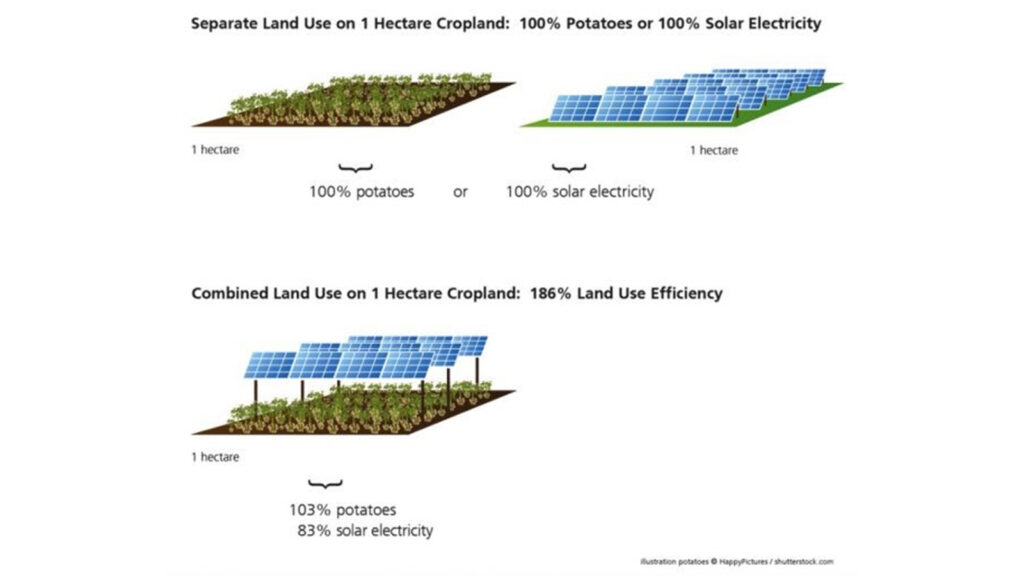
1. Maximize solar potential and make solar power more productive
A newly published study found that agricultural land, grassland, and wetlands all had high solar PV potential. The research also indicated that the world’s energy needs can be met by solar electricity with as little as 1% of farmland converted to Agrivoltaics. However, solar farms’ output and efficiency can be severely diminished by excessive heat. Planting crops directly beneath PV panels can reduce their surface temperature and keep them functioning at peak efficiency. Planting crops directly beneath solar panels has been shown by Oregon State University to enhance electricity production by 10%.
2. Increase land productivity
With the rise of photovoltaic solar energy around the world, the ability for farmers to boost their income by growing crops and creating sustainable energy is becoming increasingly essential. Global photovoltaic (PV) capacity is expected to increase by 19% in 2021 compared to the previous year, to a total of 843,086 MW, as reported by the International Renewable Energy Agency (IRENA).
3. Reduce evaporation and increase soil moisture for better crop growth
By blocking the sun, solar panels can save watering expenses by as much as 29 percent. Soil moisture is increased and plant water needs are met as a result.
4. Reducing the negative effects of heat and extreme weather on crops
When the amount of light falling on a crop hits the light saturation point, it is no longer optimal. Extreme heat and cold both require more water from crops, which can damage them or slow their growth. By tilting the solar panels to direct as much light as possible onto the crop, agricultural photovoltaic systems (agrivoltaics) can mitigate heat stress and other adverse impacts of inclement weather.
5. Making ecosystems sustainable
By prohibiting the use of herbicides, the use of beehives and animal husbandry around the perimeter of the land, and the installation of vegetation perimeter fencing, agrivoltaics contributes to sustainable development as well as the protection and improvement of biodiversity and ecosystems.
The successful implementations of agrivoltaics
1.BayWa’s agrivoltaics project in the Netherlands
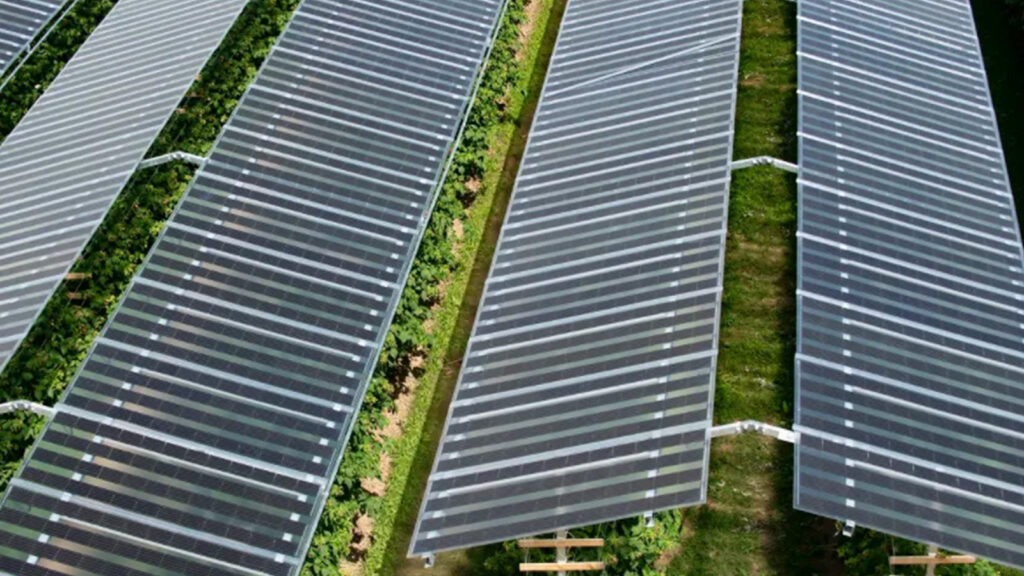
In Babberich, the Netherlands, BayWa r.e. constructed one of its first commercial Agri-PV sites. Pilot Agri-PV projects implemented by BayWa r.e. in the Netherlands and Germany have contributed to the growth of the sector’s knowledge base. Wheat, potatoes, celery, blueberries, red currants, raspberries, strawberries, and blackberries were the primary crops studied in these studies.
The data showed that the temperature under the panels was two to five degrees cooler than conventional gardening techniques on hot days. There will be less heat stress and less water will be lost through evaporation from the soil. As an added bonus, heat was held even better at night than under the plastic coverings farmers use now to keep berries warm (this could lead to less plastic being used in farms).
2.Viticulture Agrivoltaics in France by Sun’Agri
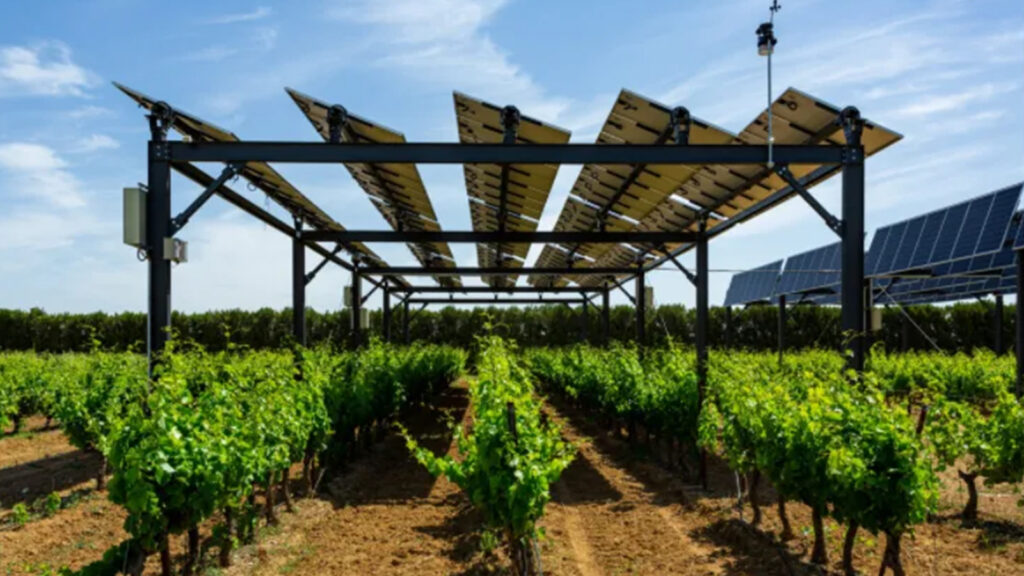
The plant was installed in the Hérault wine region in Piolenc as part of a programme to evaluate the efficacy of agrivoltaics in various agricultural settings. Six hundred of the thousand square metres of grapes planted in the experimental programme were shaded by their flexible agrivoltaic system.
Because of this decrease in evapotranspiration, the PV-sheltered vines needed 12-34% less water. The agrivoltaic setup also enhanced the grape’s aromatic profile, resulting in a 13% increase in anthocyanins (red pigments) and a 9-14% increase in acidity.
However, you should also consider the downside of agrivoltaics
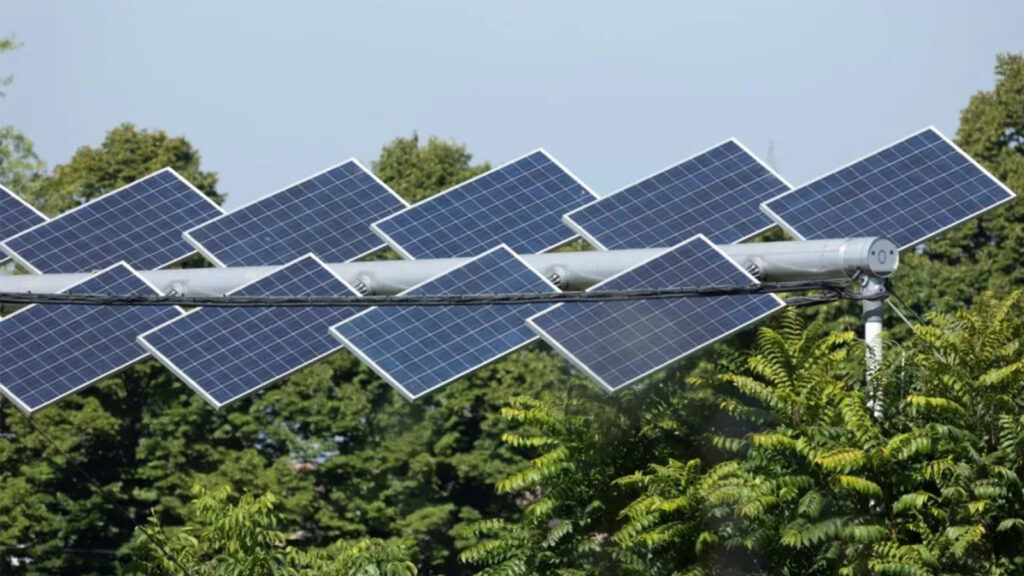
1.Agrivoltaics systems are complicated, requiring a lot of time and money to set up and maintain.
Most farmers don’t have the technical knowledge to implement agrivoltaics. They may need to call in experts if something breaks down beyond their ability to fix. As a result, the cost of hiring a professional may be out of reach for many. Solar system upkeep is an additional expense that farmers must account for.
2. some farmland must be sacrificed in order to make room for agrivoltaic systems.
Since agrivoltaics systems also necessitate some amount of area, this can cause a conflict between the two when it comes to expanding agricultural land. The greatest challenge to the advancement of agrivoltaics systems will be the continuing loss of farmland. Depending on the type of crop, solar panels, etc., agrivoltaics systems will always require some farmland.
3. Shade from agrivoltaics systems may affect the growth of some crops
Not all plants thrive in the shadow. The most prevalent crops, maize and wheat, are severely stunted by shade. Lettuce, spinach, and tomatoes are shade-tolerant, but they aren’t enough to sustain a huge population. Therefore, it is important to find a reasonable equilibrium between producing electricity and cultivating crops.
In the vibrant realm of agrivoltaics, a harmonious synergy between technology and nature emerges, offering a pathway to a more sustainable future. As we navigate the intricate interplay of solar energy and agriculture, let us embrace the promise it holds for resilient ecosystems, enhanced productivity, and a greener world. Through careful consideration and innovation, agrivoltaics stands poised to illuminate our journey toward a harmonious coexistence of energy and agriculture.
Technology and nature working together in agrivoltaics promises a sustainable future. Maysun Solar is a pioneer in the solar energy industry. Maysun Solar’s half-cut, MBB, IBC, and Shingled panel modules have led the industry since 2008. Their all-black, black frame, silver, and glass-to-glass solar panels function well and complement architectural aesthetics. Maysun Solar’s warehouses, offices, and installer partnerships span the globe. Maysun Solar is your photovoltaic resource.
Reference:
- Dinesh, H., & Pearce, J. M. (2016, February). The potential of agrivoltaic systems. Renewable and Sustainable Energy Reviews, 54, 299–308. https://doi.org/10.1016/j.rser.2015.10.024
- “Photovoltaic greenhouse and agricultural photovoltaic greenhouse”. CVE. Retrieved 2023-02-26.
- “These solar panels pull in water vapor to grow crops in the desert”. Cell Press. Retrieved 18 April 2022.
- Movellan, Junko (10 October 2013). “Japan Next-Generation Farmers Cultivate Crops and Solar Energy”. renewableenergyworld.com. Retrieved 2017-09-11.
- Solar Power Europe Agrisolar Best Practices Guidelines Version 1.0, p.43 and p.46 Case study
- Agrivoltaics, the advantages of combining renewables and agriculture
- 5 Major Agrivoltaics Disadvantages byOlivia Bolt,AGRICULTURE
- Benefits of Agrivoltaics and 5 real-life examples of successful implementationsby Laura Rodríguez
- Agrivoltaics, the advantages of combining renewables and agriculture by Vector Renewables

New Photovoltaic news you should know about (March 2024)
Table of Contents REC Unveils a 430 W Heterojunction Solar Module Boasting 22.2% Efficiency REC, a Singapore-based PV module manufacturer, introduces its residential solar modules featuring Alpha heterojunction cell technology. Production has commenced at REC’s Industry 4.0 fab in Singapore, with initial shipments

IBC Solar Modules vs. Bifacial Glass-Glass Solar Modules: Which Is More Suitable for Winter or Low-Light Conditions?
Table of Contents Introduction As the demand for renewable energy continues to surge, advancements in solar technology have broadened the spectrum of component choices available to us. Among these, IBC (Interdigitated Back Contact) full black solar modules have garnered special attention due to

Why Are Lightweight Bifacial Solar Panels the Best Choice for Balcony Solar Power Plants?
Table of Contents In the quest for efficient and eco-friendly home energy solutions, solar photovoltaic technology has emerged as a key player due to its sustainability and clean energy benefits. Particularly in the space-constrained urban settings, the effective conversion of every inch of

Questions You Might Ask About Balcony Solar Power Plants in 2024
Table of Contents What is a Balcony Solar Power Plant? Similar to a traditional photovoltaic panel, a Balcony Solar Power Plant is a device designed to generate electricity from solar energy. This green energy generator is specifically tailored for self-consumption, but it comes with

A Step-by-Step DTU Guide for Balcony Solar Power Plants
As renewable energy becomes increasingly integral in our daily lives, Maysun Solar’s Balcony Solar Power Station, with its advanced technology and user-friendly design, represents a transformative approach to home solar solutions. The integration of a Data Transfer Unit (DTU) enhances its smart functionality

What Are The Main Components of Solar Panels?
What are the main components of solar panel? Solar panels, the cornerstone of solar energy technology, are composed of several integral parts, each contributing to their ability to harness sunlight and convert it into electrical energy. In this article, we will explore the essential

